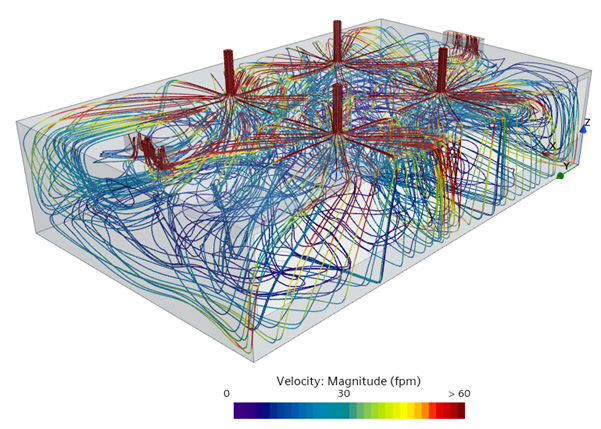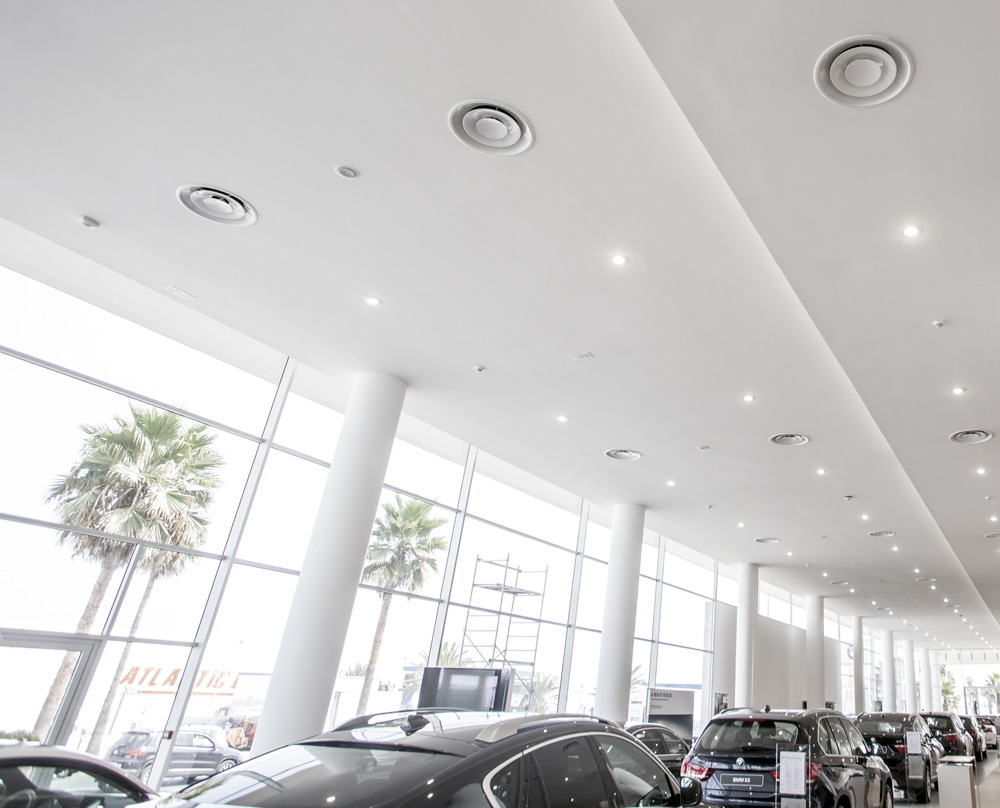Providing top-tier HVAC services and energy solutions for modern buildings. Contact us today to discover how we can help optimize your energy consumption and cut costs.
All current energy efficiency modeling tools share a significant flaw: they assume that the air in each room of a building is well-mixed, which is rarely the case. In commercial buildings, it’s common to find that over 10% of energy is wasted due to inefficient air mixing. For example, in rooms with high ceilings, we’ve observed energy consumption increase by over 40% just to compensate for these inefficiencies.
We have developed unique advanced tools that not only identify and correct these issues, but also precisely quantify their impact on a building’s annual energy consumption and CO2 emissions.
We offer our services to energy efficiency consultants, mechanical engineering firms, architects, governmental institutions and commercial building owners.
Improving Sustainability through Engineered Air Distribution
Understanding and optimizing the movement of air within a room is a complex challenge. With an array of room configurations and influencing factors, predicting air behavior accurately is paramount for enhancing the efficiency of heating, ventilation, and air conditioning (HVAC) systems.
Until recently, grilles and diffusers served merely to cover openings in walls and ceilings and distribute the air in an approximate direction. Engineers lacked sophisticated tools to predict and measure air distribution performance during the design phase. CFD changes everything!
Frank Godbout, President of EffectiV HVAC Inc. and ASHRAE TC 4.3 Voting Member

Enhancing air mixing in a room can significantly reduce energy consumption by lowering the heating or cooling load, as well as the required amount of outside air for maintaining healthy indoor environments.
Thanks to Computational Fluid Dynamics (CFD) simulations, we can now determine which diffusers will perform optimally in specific applications and quantify air distribution performance during the design phase.
Computer Fluid Dynamics (CFD) simulations give HVAC designers access to untapped energy savings with a significant impact

Combining our expertise in air distribution with CFD, we have developed a unique procedure to evaluate the direct impact of improved air mixing on energy consumption and CO2 emissions.
One of the Most Cost-Effective Ways to Reduce Your Greenhouse Gas Emissions
Effective air distribution is a path to substantial efficiency gains at a relatively low cost. Reducing inefficiencies in air mixing is one of the most affordable solutions in terms of cost per ton of CO2 reduced.
It also provides one of the fastest returns on investment.
A Solution for Both Existing Buildings and New Constructions
Air diffusers are the easiest part of a ventilation system to replace in an existing building, as they are the only component of the HVAC system that’s located in the room.
Our energy efficiency analysis applies equally well to both existing buildings and new constructions, and significant gains can be achieved in both cases.
Our innovative approach can be applied to all types commercial and institutional buildings, including offices, schools, sports facilities, convention centers, museums, airports, healthcare, retail stores and restaurants.




Guaranteed minimum of 5% energy savings and CO2 reduction
Before accepting a contract, we use our expertise to pre-qualify your building. If we don’t think that we can reduce your HVAC-related energy consumption and CO2 emissions by at least 5%, we won’t accept the contract. Having a real impact is important for us, this is why we do what we do. Our innovative approach can save a lot more than 5% in most buildings, so why waste our resources and your money for a lesser impact?
If we accept the contract and our report doesn’t demonstrate at least 5% energy savings at the end, we won’t charge you for it. That’s how confident we are about the results.
5% is the minimum savings that you should expect, we aim for much higher numbers in every building that we work on.
When Well-Being Aligns with the Planet
Improving air mixing has a major positive impact that goes beyond the environment. With more efficient air distribution, indoor air quality is improved, while also reducing sources of discomfort for employees, students, customers, and other occupants.
